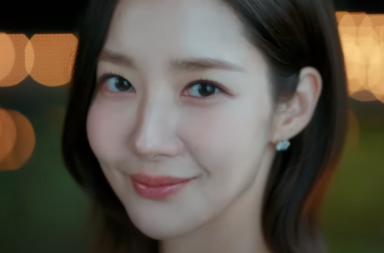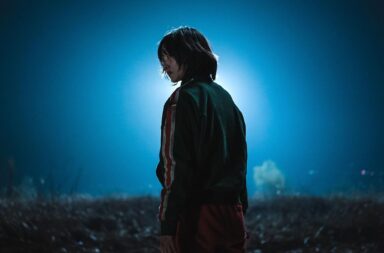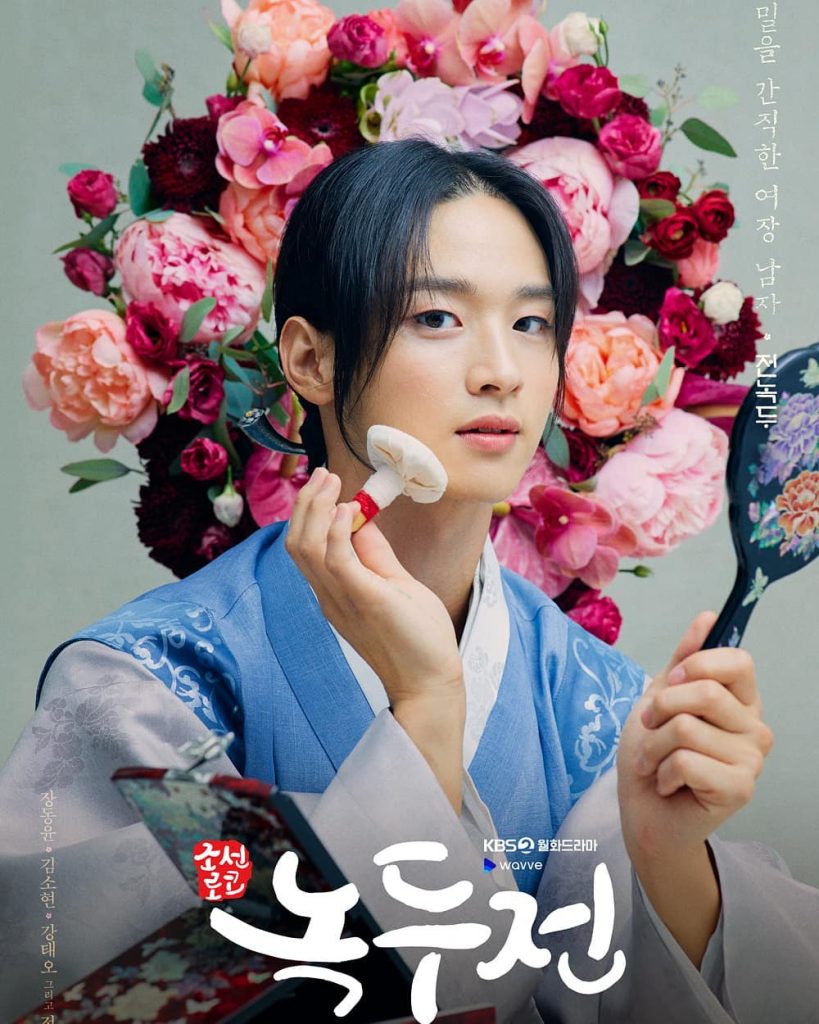
In The Tale of Nokdu, what you see isn’t always what you get. The drama’s central plot revolves around the main character’s ability to go undetected while he cross-dresses as a woman. In other words, Nok-du’s success largely hinges on his ability to perform femininity. What is more, the significance of gender performance to the story highlights other performances that take place in the drama. The characters’ fluidity mirrors the drama’s overall variability in terms of genre.
The KBS2 production is based on a webtoon named “Nokdujeon” by Hye Jin Yang that ran from 2014 to 2018. Though The Tale of Nokdu has been slated as a romantic comedy, the drama features exciting action sequences and mysterious backstories that make for a unique viewing experience that cannot be defined by a single genre.
The Tale of Nokdu follows its eponymous character Jeon Nok-du (Jang Dong-yoon) as he seeks out an assassin that attacked his family in an attempt to discover the truth behind his past. Nok-du follows the assassin’s trail until he reaches a village for widows where men are strictly forbidden. To gain entrance, Nok-du disguises himself as a widower named Lady Kim. Before Nok-du reaches the village, however, he bumps into a gisaeng-in-training named Dong Dong-ju (Kim So-hyun). When Nok-du first meets Dong-ju, she has disguised herself as a man and when they meet again at the women’s village, it is Nok-du who has disguised himself as a woman.
Within the village, Nok-du must learn how to act like a woman. This achieved through intricate costuming, hair, and makeup. Because much of this performance relies on accessories, Nok-du’s male body is at constant risk of being exposed, be it while bathing or cutting wood. This fear of exposure is reinforced by moments when his façade drops, his skirt falls, or his shirt rips. Nok-du discovers that he must not only adapt his voice to sound more feminine, but must use particular phrases to be perceived as more feminine.
In episode four, Dong-ju teaches Nok-du (Lady Kim) the appropriate responses of a lady, including “jinjja” and “omo.” Dong-ju wonders: “You are a woman too. How could you not get [it]?” By cross-dressing, Nok-du reveals how gender is an external characteristic that can be adopted and performed. Therefore, Nok-du can be both man and woman alternately. When he cross-dresses, he is not immediately recognizable as a man, but still not perfectly a woman. The dramatic irony, that the audience is aware of Nok-du’s true gender but other characters are not, enables The Tale of Nokdu to maintain a playful and comedic tone despite sometimes heavy subject matter.
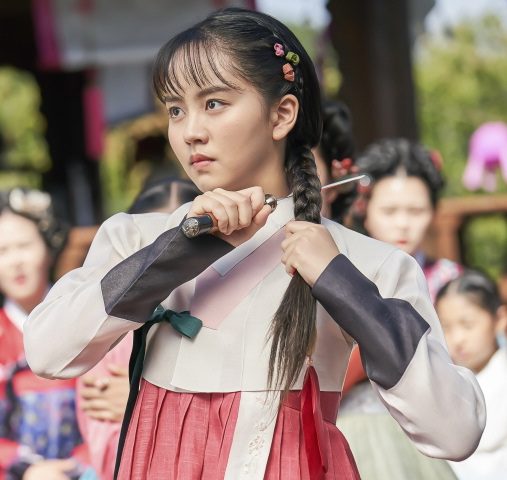
However, Nok-du is only one of many characters in the village that complicates fixed notions of gender as simply man or woman. Dong-ju, Nok-du’s love interest, is the perfect example of this. When Dong-ju first meets Nok-du in the nation’s capital, she is disguised as a man. If it weren’t for Nok-du, she would have committed regicide, though her motives are at first unclear. At the village, Dong-ju rejects the role she is expected to fulfill as a gisaeng. She is tone deaf and a poor dancer who lacks a sense of rhythm, feminine attributes necessary for a success as a gisaeng. Dong-ju rejects this role and its related gendered customs in episode two, when she cuts her own hair in protest of the unfair treatment of her counterparts by men.
Dong-ju and Nok-du’s relationship progresses as they come to learn the truth about one another. At first, the truth revolves around their true gender identities. Dong-ju uncovers the truth about Nok-du early on. However, this revelation does not reinforce heternormativity predicated by strict gender roles. Instead, it is enables the pair to establish a more equitable and intimate bond based on authenticity. Dong-ju comes to appreciate Nok-du for his courage and skill, and vice versa. Their bond enables them to explore their pasts and seek answers about themselves like: Who am I and what happened to my family? In asking these questions, the drama takes on yet another genre through its effective use of flashbacks that at times give it the feel of a well-constructed melodrama.
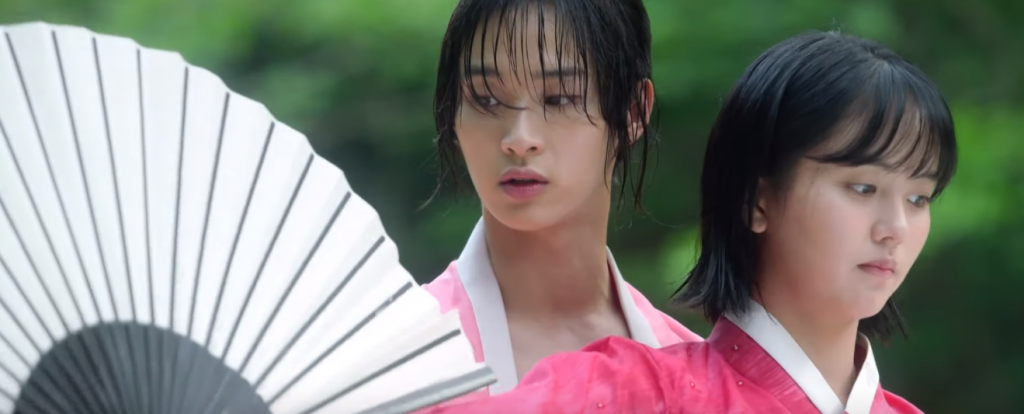
A scene representative of their relationship occurs in episode five, after Dong-ju has discovered that Nok-du is a man and works to keep his identity a secret at the village. Nok-du offers to teach Dong-ju how a fan dance because of her lack of skill. In the scene, Nok-du is easily recognizable as a man; his make-up has washed off in the river and his bare chest is visible. In the moment, he is fully exposed. Yet he is able to perfect a feminine performance in the form of the fan dance while Dong-Ju, the true woman, remains clumsy and unable.
The pair become physically close as Nok-du teaches Dong-ju, moving her arms and catching her when she stumbles. Their proximity is not just physical, for Nok-du empathizes with Dong-ju’s situation: “It must have been hard. Trying to get by while only doing the things you hate.” This exposure, both physical and emotional, leads to a more equitable relationship between the two leads in which they can be their authentic selves. In terms of the drama itself, it enables the genre to be more introspective and ponder themes that revolve around the uncovering of hidden pasts.
Their love story is nicely complemented by other women and men who push the boundaries on gender. This includes the Virtuous Women Corps or Yeollyeodan, a group of vigilantes who protect the women’s village, and the Muwol Corps or Muwoldan, a group of women assassins who exert a great amount of power and influence both inside and outside the village. Even the male characters are not strictly heterosexual, masculine figures. Take, for example, Yeon Geun, a public official and nobleman who expresses romantic interest in Nok-du. His attraction to Nok-du provides Nok-du safety in the village because it corroborates his so-called femininity – if a male figure is attracted to Lady Kim then she must be female. Even after Nok-du’s true identity is revealed, Yeon Guen comically and passionately continues to support him, queering their relationship even further.
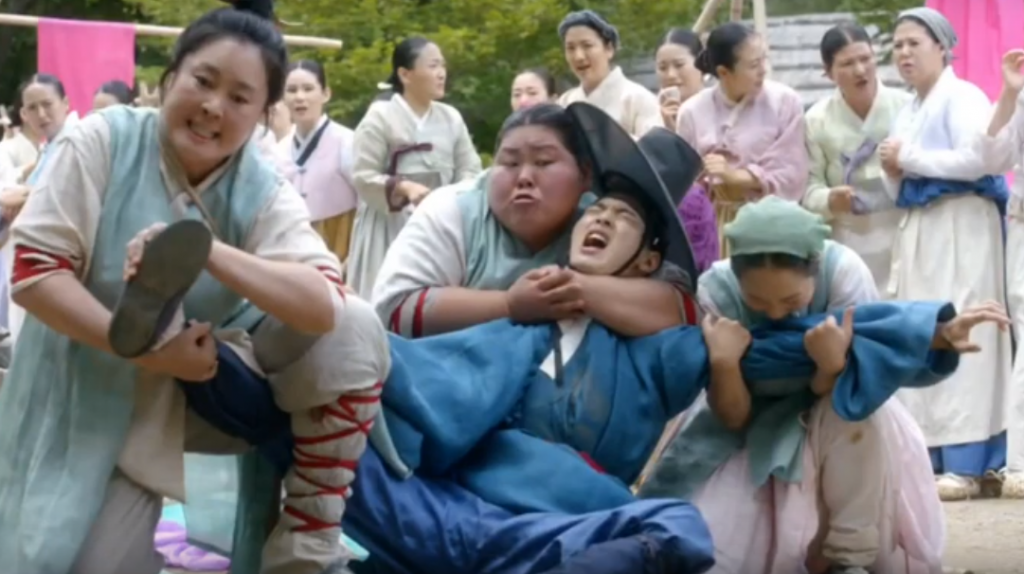
This diverse cast of characters makes the village a private, feminine sphere with limited patriarchal interference and adherence to patriarchal norms. The village is in direct contrast to Hanyang, the capital city where bureaucrats fight for the throne. This subplot involves more strictly historical drama generic elements, unlike the comedic tone of the village scenes. In fact, Nok-du is publically revealed to be a man as the characters are displaced from the village and the story shifts its focus to Hanyang. The contrast between the women’s village and relatively masculine capital city encourages the audience to ask questions about the characters’ true identities.
One thing is clear—in order to find themselves, Nok-du and Dong-ju need each other. As The Tale of Nokdu progresses and characters move between the village and more public, patriarchal spaces, gender roles will likely be reinforced more strictly and Nok-du and Dong-ju’s secrets are at greater risk of being exposed. Thus far, the drama has rejected strict gender roles and identities in favor of androgyny and equality. It remains to be seen if Nok-du and Dong-ju will successfully maintain their guises and find the answers to their past.
For a halfway completed drama, The Tale of Nokdu has managed to pack in a lot of interesting elements, and not in a way that has lost its audience. The ability of the drama to experiment with various genres at once is due in large part to the complex character motives, desires, and relationships that drive the plot. As these are exposed, Nok-du and Dong-ju’s love will undoubtedly be tested.

